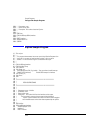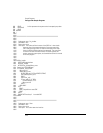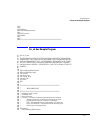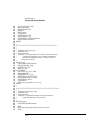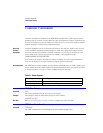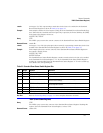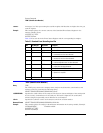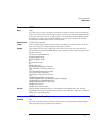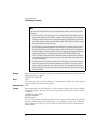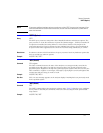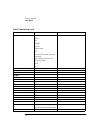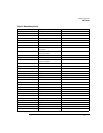
3-2
Common Commands
*CLS (Clear Status)
Common Commands
Common commands are defined by the IEEE 488.2 standard. They control generic device
functions that are common to many different types of instruments. Common commands can
be received and processed by the analyzer, whether they are sent over the GPIB as separate
program messages or within other program messages.
Receiving
Common
Commands
Common commands can be received and processed by the analyzer, whether they are sent
over the GPIB as separate program messages or within other program messages. If a sub-
system is currently selected and a common command is received by the analyzer, the ana-
lyzer remains in the selected subsystem. For example, if the program message
"ACQUIRE:AVERAGE ON;*CLS;COUNT 1024"
is received by the analyzer, the analyzer enables averaging, clears the status information,
then sets the number of averages without leaving the selected subsystem.
Status Registers The following two status registers used by common commands have an enable (mask) regis-
ter. By setting bits in the enable register, the status information can be selected for use. Refer
to “Status Reporting” on page 1-11 for a complete discussion of status.
*CLS (Clear Status)
Command *CLS
The *CLS command clears all status and error registers.
Example This example clears the status data structures of the analyzer.
10 OUTPUT 707;"*CLS"
See Also Refer to “Error Messages” on page 1-46 for a complete discussion of status.
*ESE (Event Status Enable)
Command *ESE <mask>
The *ESE command sets the Standard Event Status Enable Register bits.
Table 3-1. Status Registers
Status Register Enable Register
Event Status Register Event Status Enable Register
Status Byte Register Service Request Enable Register



